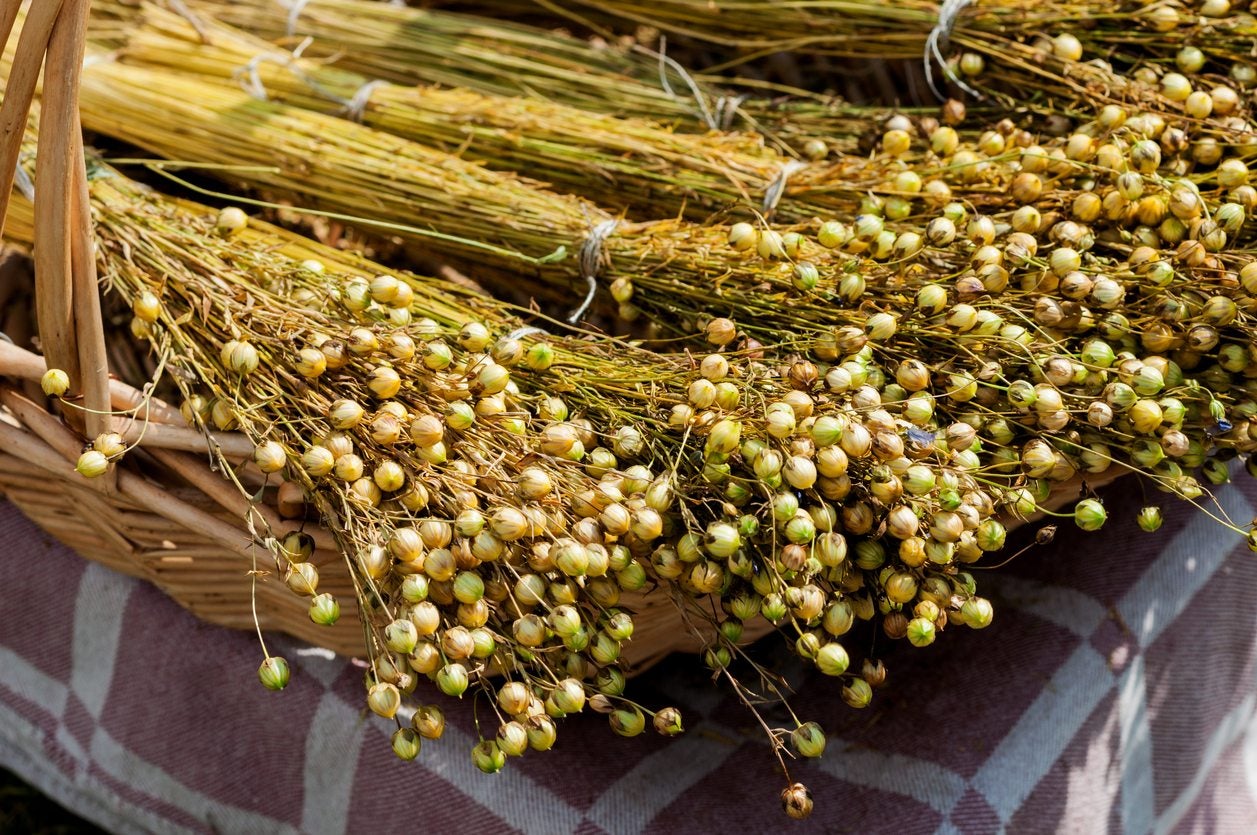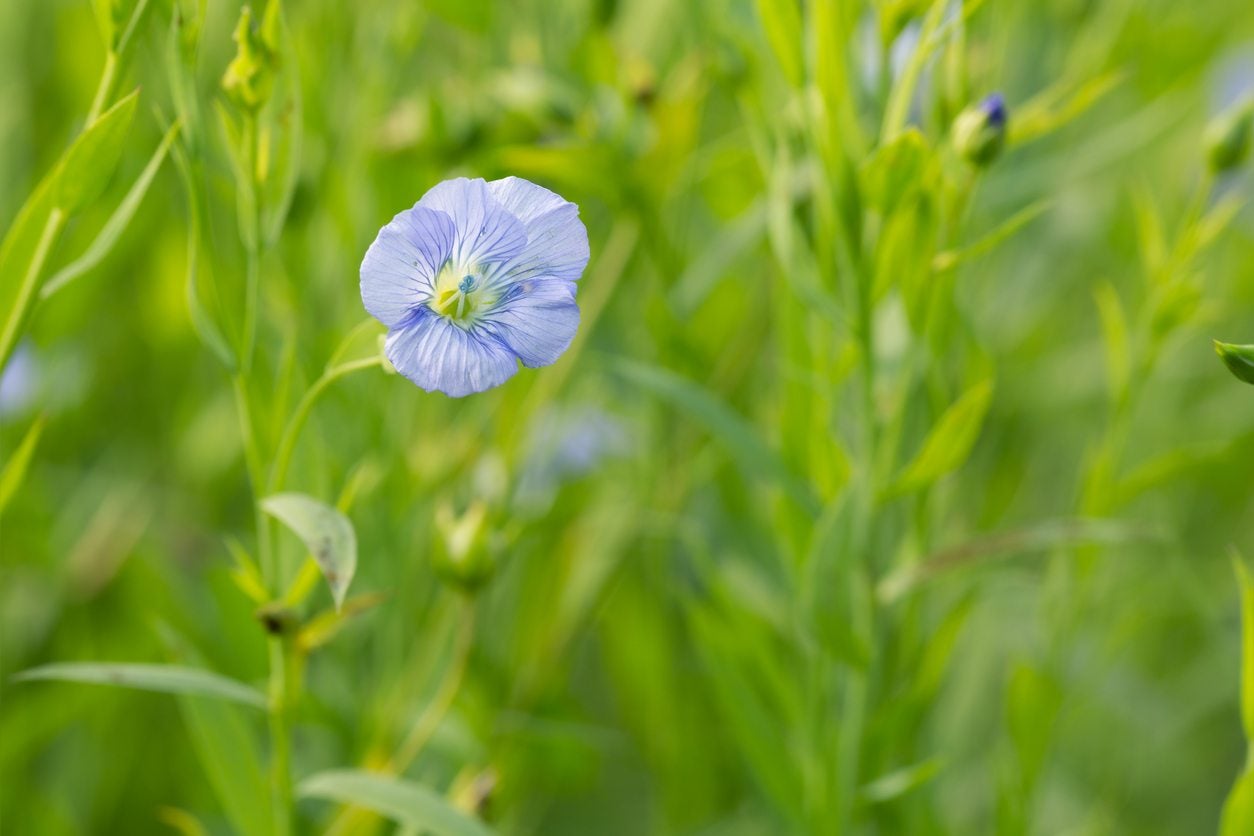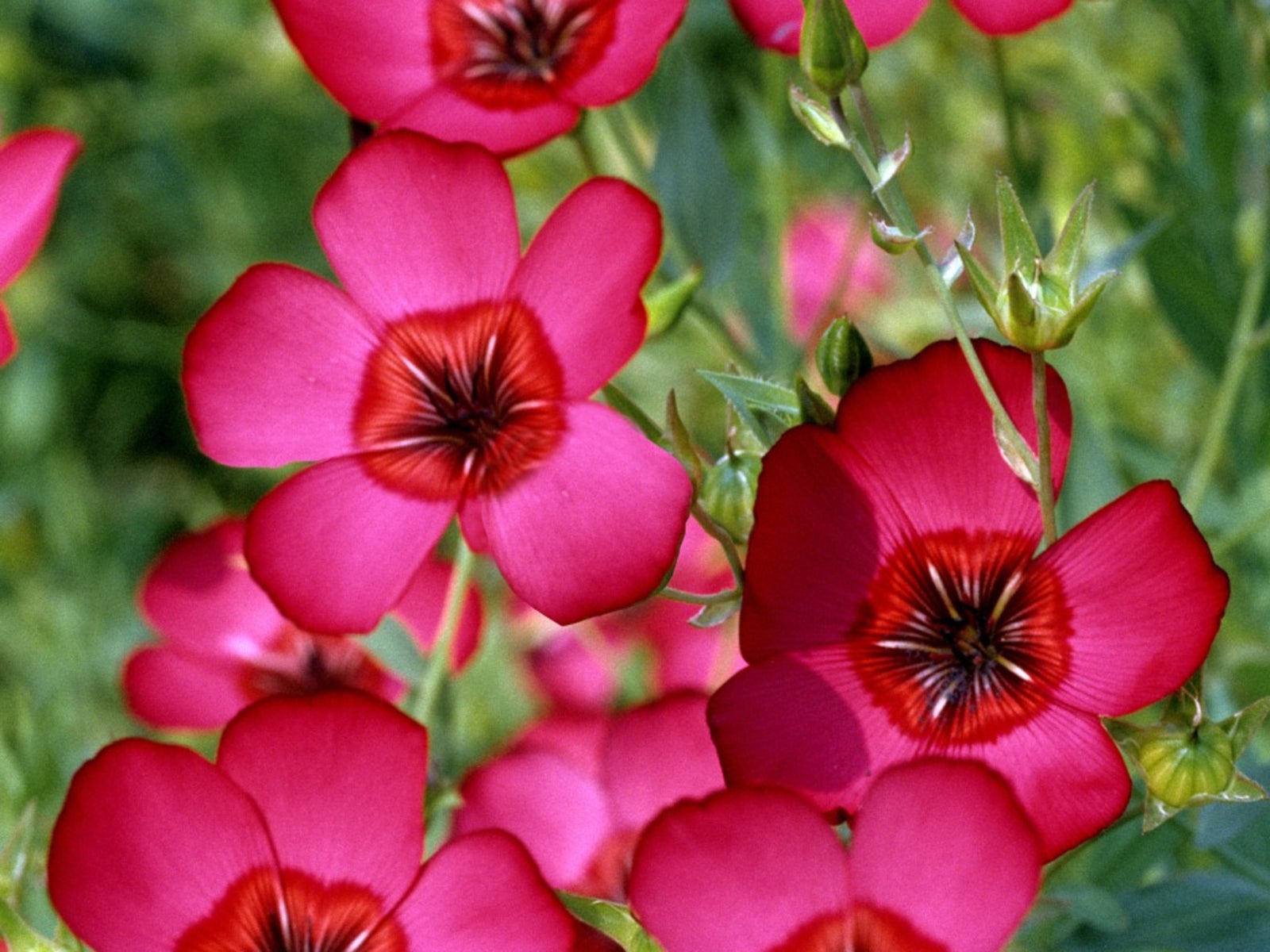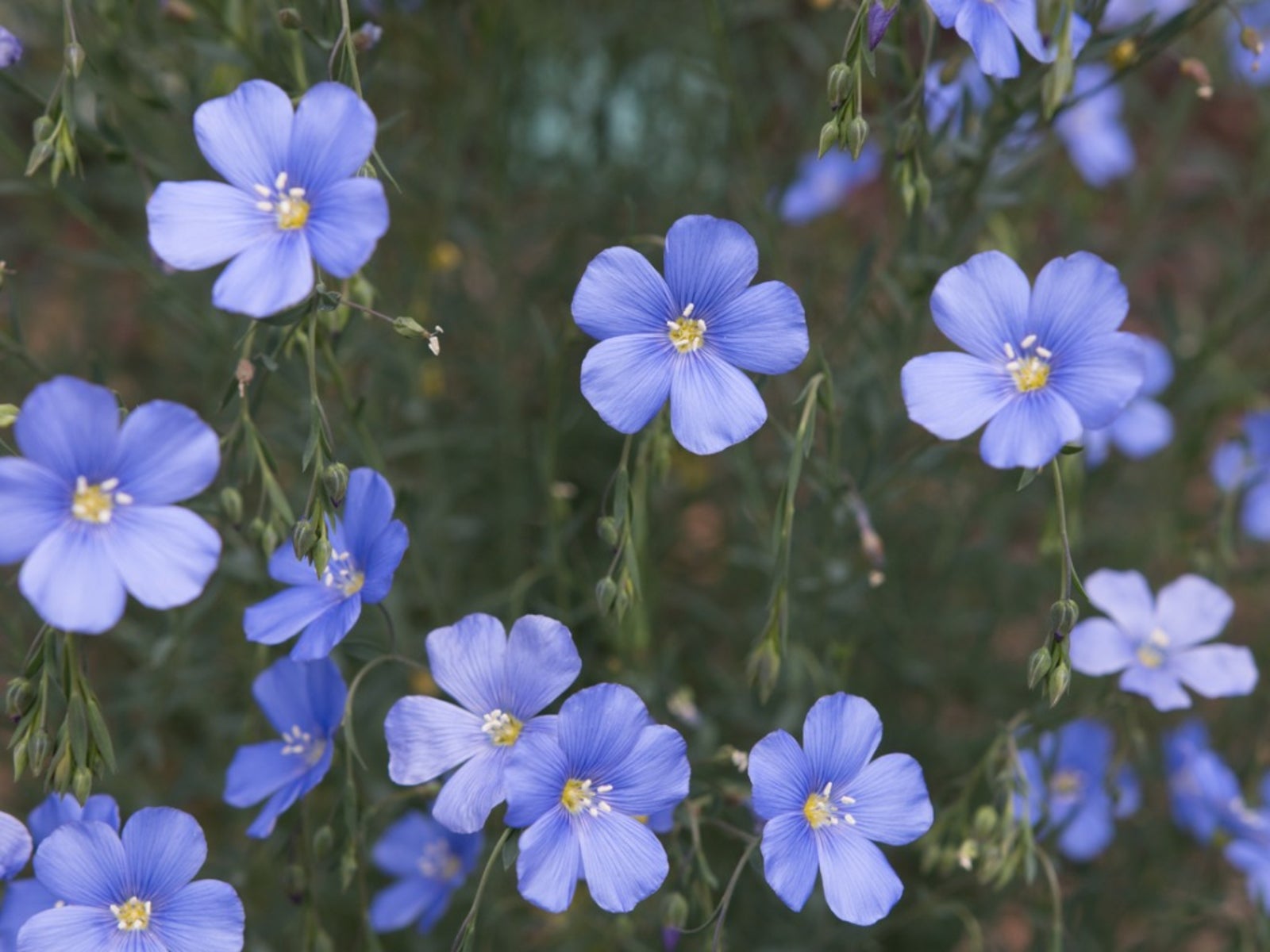Flaxseed Harvesting Time: Learn How To Harvest Flaxseed In Gardens


Are you wondering how to harvest flaxseed? Commercial flaxseed growers generally winnow the plants and allow them to dry in the field before picking up the flax with a combine. For backyard flaxseed growers, harvesting flaxseed is a very different process that is usually done completely by hand. Read on to learn how to harvest flaxseed.
Flaxseed Harvesting Time
So, when do you harvest flaxseed in the garden? As a general rule, flaxseed is harvested when approximately 90 percent of the seedheads have turned tan or gold, and the seeds rattle in the pods – about 100 days after planting seeds. There will probably still be a few green leaves, and the plants may also have a few remaining blooms.
How to Harvest Flaxseed
Grab a handful of stems at ground level, then pull the plants up by the roots and shake to remove excess soil. Gather the stems into a bundle and secure them with string or rubber bands. Then hang the bundle in a warm, well-ventilated room for three to five weeks, or when the stems are completely dry. Remove the seeds from the pods, which is the most difficult part of the process. Mother Earth News advises putting a pillowcase over the top of the bundle, then rolling the heads with a rolling pin. Alternatively, you can lay the bundle on a driveway and drive over the pods with your car. Whichever method works for you is fine – even if there’s another you find that works better. Pour the entire contents into a bowl. Stand outdoors on a breezy (but not windy) day and pour the contents from one bowl into another bowl while the breeze blows away the chaff. Repeat the process, working with one bundle at a time.
Gardening tips, videos, info and more delivered right to your inbox!
Sign up for the Gardening Know How newsletter today and receive a free copy of our e-book "How to Grow Delicious Tomatoes".

A Credentialed Garden Writer, Mary H. Dyer was with Gardening Know How in the very beginning, publishing articles as early as 2007.
-
 Looking For Plants To Give You The Soft And Fuzzies? Try These 5 Fuzzy Leaf Plant Options
Looking For Plants To Give You The Soft And Fuzzies? Try These 5 Fuzzy Leaf Plant OptionsLovers of texture, drama, silver foliage and tactile plants will adore these special sensory garden additions. These fuzzy leaf plant options will leave you all aglow
By Susan Albert
-
 Get Ready For A Summer Of Hummers! Grow These Full Sun Hummingbird Plants and Flowers
Get Ready For A Summer Of Hummers! Grow These Full Sun Hummingbird Plants and FlowersIf you’re lucky enough to enjoy a sunny backyard, make sure you are maxing out on your pollinator opportunities and grow these full sun hummingbird plants and flowers
By Tonya Barnett
-
 What Is Flaxseed – Tips On Growing Your Own Flaxseed Plants
What Is Flaxseed – Tips On Growing Your Own Flaxseed PlantsFlax, one of the first crops domesticated by man, was used primarily for fiber. In recent years, we have become more aware of the plant's many benefits - the seeds. Growing your own flaxseed isn't difficult, and the beauty of the plant is an added bonus. Learn more here.
By Mary H. Dyer
-
 Scarlet Flax Planting: Scarlet Flax Care And Growing Conditions
Scarlet Flax Planting: Scarlet Flax Care And Growing ConditionsAn interesting plant for the garden with a rich history, not to mention its vibrant red color, the scarlet flax wildflower is a great addition. Read this article for more scarlet flax information.
By Susan Patterson
-
 Growing Flax: Tips For Flax Plant Care
Growing Flax: Tips For Flax Plant CareThe blue flax flower is a beautiful wildflower that packs quite a punch in the garden. Learn how to grow flax in your garden by following the tips found in this article.
By Becca Badgett